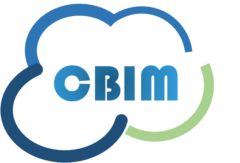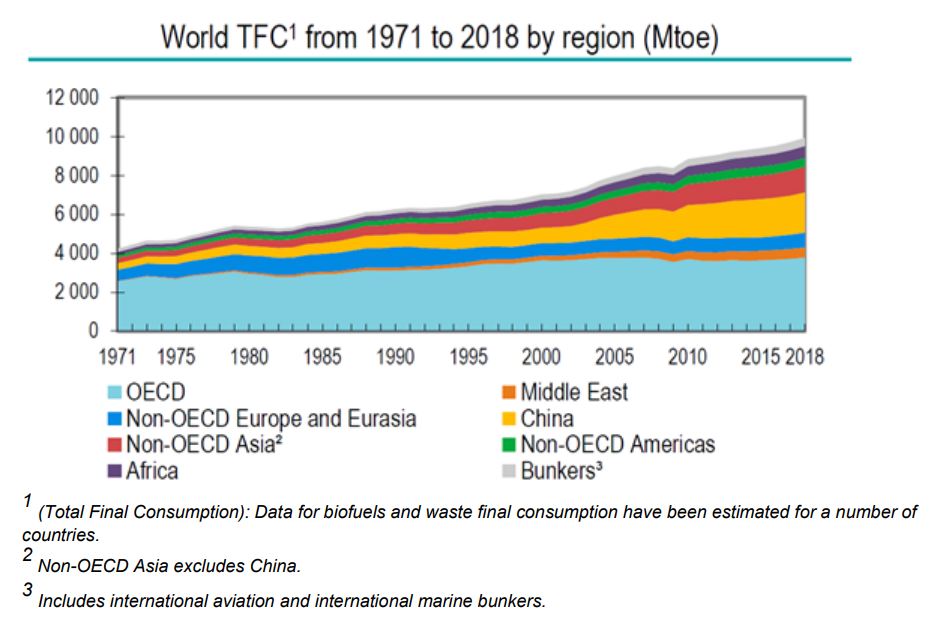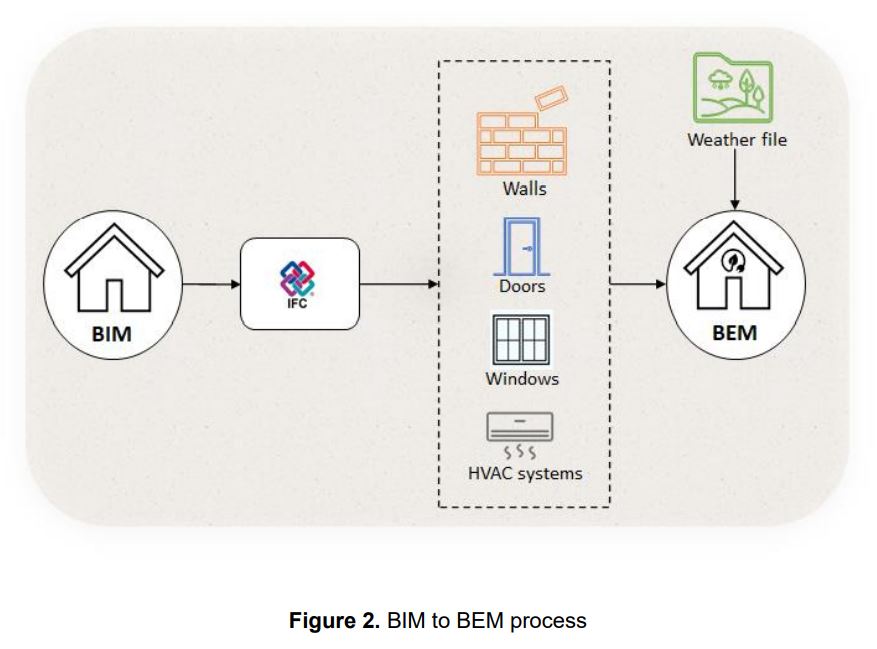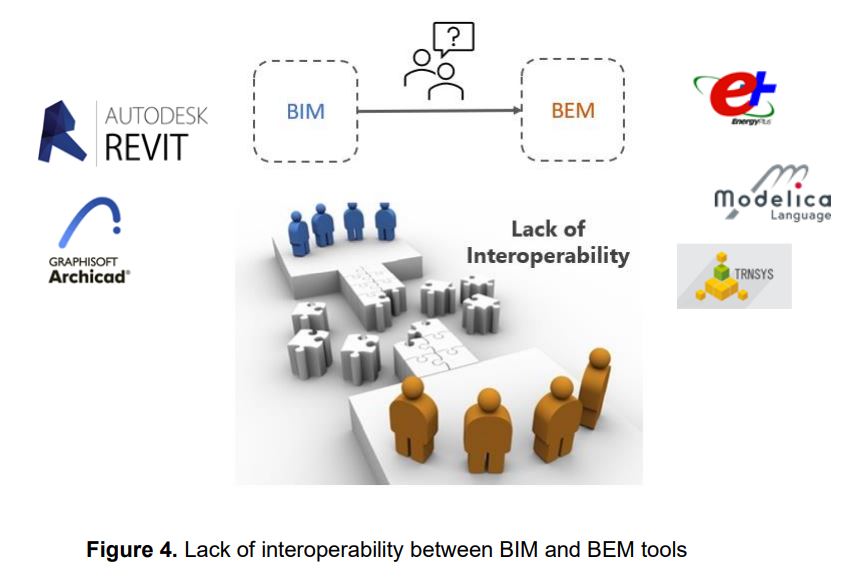



CBIM - European Training Network
BIM-based Building Energy Modelling
The purpose of this blog post is to discuss how Building Information Modelling (BIM) can improve and increase the adoption of Building Energy Modelling (BEM), the limitations of existing BIM-based BEM approaches, and the future of BEM as the building industry is moving from BIM to Digital Twins. The International Energy Agency (IEA) reports that the world's total energy consumption trend (Figure 1) is accelerating based on the comprehensive final consumption data from 1971 to 2018. This trend can be observed in all regional countries like OECD, Non-OECD, Africa, Asia, Middle East, and even international aviation and international marine bunkers [1].
Figure 1. World total final consumption by region (IEA, World Energy Balances, 2020)
The building sector itself has an outstanding contribution to this total energy consumption, with variations from country to country. For instance, the European Commission declared that "Buildings are responsible for approximately 40% of EU energy consumption and 36% of the greenhouse gas emissions. Buildings are therefore the single largest energy consumer in Europe" [2]. The energy intensity (energy consumption per floor area) in the residential sector alone has been compared from 2000 to 2018 by the IEA. Their study showed that "space heating accounted for more than half of the energy consumption in the residential sector, with the highest shares in European countries" [1]. In addition, according to the US Department of Energy, heating, ventilation, and air conditioning (HVAC) systems have been ranked as the most significant contributor to building energy consumption, accounting for 35%, along with miscellaneous equipment with 36%, and lighting with 11% [3].
These liabilities are reduced by energy conservation measures such as implementing energy efficient systems and components (e.g., using high-efficiency lighting devices or insulating materials) and integrating control and monitor techniques (e.g., using sensors to control lighting levels). However, implementing energy conservation measures (ECMs) heavily relies on information from the building's design and operation conditions, and on the use of advanced software solutions for predicting, monitoring and optimising building energy performance. To this extent, the advantages of the BIM-based BEM approaches in design and operation phases regarding a collaborative project process and digitalised product stand out.
Why BIM-based BEM?
Identifying and assessing the building energy performance during the design and operation processes requires simultaneous consideration and interpretation of various quantifiable energy performance criteria while integrating and optimising different building systems and components with their influence on each other. This can be achieved using advanced BEM software to set energy targets, generate building models and building informatics, integrate ECMs, perform simulation, and optimise integrated and interrelated building systems. However, only 20% of new floor area is designed using BEM software [5], mainly because BEM is a time-consuming, error prone and expert-dependent process. Given that most of BEM-related information is already included in BIM, BIM-based BEM offers an opportunity to minimize cost and time, facilitate the rapid evaluation of design alternatives, and offer higher accuracy to the BEM process, leading to improved predictions of building energy consumption compared to traditional manual methods.
Building design and operation
The BEM fundamentals begin with the design stage that needs collaboration of the design team (includes architects, structural, MEP, and energy engineers) to generate energy-efficient design alternatives corresponding to the best energy scenario in advance. In the design stage, multiple building energy models (e.g., preliminary, developed, and detailed energy models with thermal comfort analysis) are created and simulated by different software to predict energy consumption. Afterwards, control and optimisation of the design are also necessary to (i) achieve energy performance improvements, (ii) reduce energy consumption, (iii) integrate renewables, and (iv) respond to signals from the grid; thus, the control design and optimisation indicate how the designed energy models with building systems behave under modified conditions. Further, digitalised products are crucial for monitoring and building energy management systems using virtual sensors and online deployment to reduce the energy gap between predicted and observed values in the operation stage. Consequently, BIM-based BEM arises as an opportunity to achieve the above statements on the BEM fundamentals. This approach is used to support BEM requirements in the design and operation phases.
BIM facilitates a collaborative project process which integrates all stakeholders at the beginning of the design and allows connection through the project life cycle, as represented in Figure 3. Through BIM, design decisions and energy performance targets can be established more robustly, quickly , and reliably. As a result, BIM has the potential to improve building design and operation processes, obtaining high quality and performance building systems. Additionally, BIM supports a centralised and digitalised building model to capture, collect, store, process, and integrate building performance data. For detailed information on BIM, check our previous blog posts: "BIM Basics", "BIM Research and Implementation Roadmap", "Interoperability in Building Information Modelling".
What are the limitations of BIM-based BEM?
Despite the promising benefits of BIM-based BEM mentioned above, obtaining reliable information exchange and interoperability between building performance simulation tools and stakeholders is still a limitation. One example is displayed (Figure 4) to provide more insight into the interoperability problem among BIM and BEM tools. The architectural model is created via BIM authoring tools like Revit or Archicad. The modelling requirements of BEM for building energy simulation software differ from BIM (e.g., a geometrical representation of space boundaries or thermal properties of the building objects). Therefore, energy engineers must manually re-enter the required information into the BEM model using energy simulation software tools to solve inaccuracies in the BEM model, which leads to time waste.
A transformation process from BIM to BEM tools, which focuses on the design phase of the building lifecycle, is suggested to solve the lack of interoperability, hindering the seamless data exchange between BIM and BEM tools.
BIM2BEM Transformation methods
To date, only a few transformation methods can ensure the generation of reliable building energy models from BIM models, generally known in the literature as BIM-based BEM or BIM2BEM. The main two approaches in BIM2BEM transformation are based on:
Closed BIM: this method adopts proprietary software solutions which are typically developed as BEM plugins for specific BIM authoring tools such as Revit. The communication between the plugin and the BIM authoring software is established by requesting and returning data from the authoring tool's API (i.e. Application Programming Interface). For example, Autodesk Insight 360 is a Revit plug-in which extracts energy-related data from Revit’s API to run whole building energy simulation using EnergyPlus as a simulation engine.
Benefit: Data is quite accessible through APIs, allowing seamless transfer to BEM tools even if the internal data model structure is not always clear.
Drawback: High cost of proprietary tools hinders their wider adoption and they are usually more compatible with tools from the same vendor.
Open BIM: in this method, open BIM standards such as IFC and gbXML have been adopted to overcome the incompatibility issues between BIM and BEM software. IFC was developed as a universal common data model to exchange data between BIM tools, while gbXML is a simpler data model focused on exchanging BEM-related data. In practice, BIM authoring tools are able to export an open data model which can then be used to transfer BIM data into energy simulation software using middleware tools such as Simmodel [4]. However, BEM data does not always exist in BIM models; therefore, more recent efforts look into an enriched BIM which contains all the BEM information by proposing the adoption of MVD/IDM technologies.
Benefit: Open BIM tools do not rely on specific, often expensive, BIM authoring tools.
Drawback: Exportation of Open BIM data schemata from BIM authoring tools is not properly working, causing data loss. Additionally, using MVD requires software vendors to adapt for deployment, making scalability difficult.
What is next for BIM2BEM?
The next generation of BIM is currently shifting from native BIM data models to more flexible integrated data models able to create a full “digital representation of the building”, which is known as a digital twin of the real building. By doing that, building data, which is required for building energy simulations, is obtained in real-time. Despite the provision of realistic data by Digital Twins, the automatic integration of these data from disparate sources into a building energy simulation model is still challenging, which implies interoperability issues. To this extent, semantic web technologies offer both a great potential for increased interoperability between BIM and BEM data as well as the opportunity to share data openly over the web. What's more, these new perceptions enable data, information, even knowledge capturing for evaluation of building performance in the cloud.
Usage of Semantic Web Technologies
More recently, Semantic Web Technologies have received a high rate of attention by the research community as a potential solution to reduce dependencies among collaborating BIM applications (such as BIM-based BEM) by sharing and expressing explicitly BIM data on the web. Furthermore, semantic web technologies provide the ability to integrate and manage decentralized and heterogeneous data silos in building energy performance.
From BIM to Digital Twins
For most infrastructure practitioners, BIM and BEM are only adopted to optimise the design and delivery of individual construction projects; still, the notion of compiling multi-dimensional models, which support the entire asset lifecycle, is early-stage but rapidly growing. New research avenues have opened with the building industry moving from static BIM practices to cloud-based Digital Twins for real-time building energy performance optimisation. The benefits of DTs in improving lifecycle costs, increasing thermal comfort, reducing carbon emissions and delivering asset resilience create a unique opportunity to develop and evaluate new standards for Cloud-based BIM realisation.
Regarding the handled topic in this blog, two of the research goals of the CBIM project is to:
(1) test and evaluate the use of Digital Twins for increasing the adoption of building energy modelling in the operational phase; and (2) implement semantic web technologies to BIM models considering energy performance domain. Stay tuned…
This blog post was based on recent lectures given by James O'Donnell and Dimitrios Rovas during CBIM training school, organised by the CARTIF Technology Centre.
Other References
[1] I. Energy Agency, Statistics report Key World Energy Statistics 2020, (2020).
[2] Energy performance of buildings directive | Energy, (n.d.). https://ec.europa.eu/energy/topics/energy-efficiency/energy-efficient-buildings/energyperformance-buildings-directive_en#energy-performance-of-buildings-standards (accessed September 10, 2021).
[3] Chapter 5 — Increasing Efficiency of Buildings Systems and Technologies | Department of Energy, (n.d.). https://www.energy.gov/downloads/chapter-5-increasingefficiency-buildings-systems-and-technologies (accessed September 11, 2021).
[4] O'Donnell, James. “SIMMODEL: A DOMAIN DATA MODEL FOR WHOLE BUILDING ENERGY SIMULATION.” (2013).
[5] Roth, A., Reyna, J. (ORCID:0000000333362879), 2020. Innovations in Building Energy Modeling: Research and Development Opportunities for Emerging Technologies (No. NREL/TP-5500-77835; DOE/GO-102020-5467). National Renewable Energy Lab. (NREL), Golden, CO (United States). https://doi.org/10.2172/1710155
|
|

Flavia de Andrade Pereira |
|
| < Previous post Next post >
|





